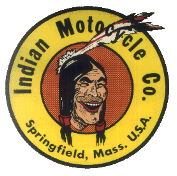Danny, if you add no oil, you may have about 15-20 miles before disaster.
I use an shut off tap in the level plug to make it easier to check, and when running a bike in, I check the level regularly.( Learnt this tip off ALex Fergueson in the Albury Wodonga area when I first started playing with 101s, he had plenty of experience, its a good idea, as its amazing how lazy you can get because lying on the floor wiith a long screwdriver is a pain in the rear, leaniing down from the saddle and opening a shut off is a lot easier.) I basically do a head bolt nip at 1 minute, 1 mile, 5 miles, then 20 mile intervals until they stop moving( usually around 80 miles for the composite head gaskets, and thats at around 35 ft/lbs. As I am stopped I then check the oil level, have a smoke and drain level into a coffee cup. I am generally quite boring about this, and have routes planned with nice viewing points/cafes for known mileages, and I get to know the hills that I can judge performance on.
Also bear in mind that if you remove the oil line you need to bleed any air out of the line by using the small bleed screw. Tapping the line gently with a screwdriver handle , you will be surprised how many bubbles come out for a while. It may clear, and may not airlock, but why take the risk?
Having set the oil pump up to give the approx 28 drops at around 30-35 mph cruising speed( I use a little lathe and an old broken timing cover, but find that this generally coincides pretty closely with the test plug with a hole in it on the bike) , I am usually over oiling, and keep it that way until I really know what is happening. I extend smoke breaks but for the first few hundred miles will be checking oil level at least every 50 miles, judging how much I drain off. When I am happy that I am over oiling ( not too much build up as I am draining excess at the stops), I adjust the pump no more than a 1/4 of a turn at a time.
Obviously this whole process is difficult to judge if you are using the hand pump to add oil between checks.
The actual amount I aim for is around 1/4 of an inch in the coffee cup, at around 40-45 mph after 50 miles) This will be more at 30-35, but as you run the motor in and increase speeds, you will find that what is way too much at 35 will be about right at 50, but goes exponential if you have a short blast at 60-65, you will nip the motor in no time.( have nearly done it twice trying to keep up with a Vincent and racing a friend on a Harley 45. If you feels a fluffiness in the motor, and a slight loss of power, pull in the clutch and coast to a halt. You will do no harm, but are seconds away from an expensive hand grenade.).Thats where the hand oil pump comes in.
A little puff of smoke on the overrun is fine, constant smoke from overoiling is not good, too much oil will badly overheat the engine from friction drag, and you will clag up your piston and valves /head with carbon build up.
Eventually you will work out the oiling to suit your general riding, on a stock run in 101 I am happy to sit at around 55mph near enough all day, the motor is humming then. others may ride slower , some may ride a little faster, and hilly terrain will entail periods of higher revs.
I also find that oil consumption will drop off markedly when the rings have bedded in, this is usually well on the way and noticeable at around 600-800 miles on a fresh motor. Jorgen Sundberg in Sweden recommends a 1500 mile running in period before heavy throttle use.


